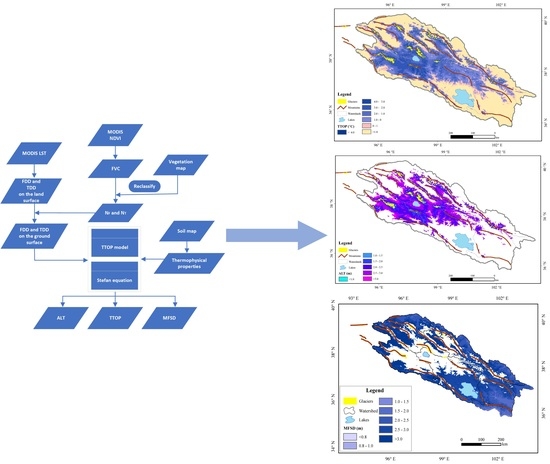Mapping Frozen Ground in the Qilian Mountains in 2004–2019 Using Google Earth Engine Cloud Computing
Abstract
Share and Cite
Qi, Y.; Li, S.; Ran, Y.; Wang, H.; Wu, J.; Lian, X.; Luo, D. Mapping Frozen Ground in the Qilian Mountains in 2004–2019 Using Google Earth Engine Cloud Computing. Remote Sens. 2021, 13, 149. https://doi.org/10.3390/rs13010149
Qi Y, Li S, Ran Y, Wang H, Wu J, Lian X, Luo D. Mapping Frozen Ground in the Qilian Mountains in 2004–2019 Using Google Earth Engine Cloud Computing. Remote Sensing. 2021; 13(1):149. https://doi.org/10.3390/rs13010149
Chicago/Turabian StyleQi, Yuan, Shiwei Li, Youhua Ran, Hongwei Wang, Jichun Wu, Xihong Lian, and Dongliang Luo. 2021. "Mapping Frozen Ground in the Qilian Mountains in 2004–2019 Using Google Earth Engine Cloud Computing" Remote Sensing 13, no. 1: 149. https://doi.org/10.3390/rs13010149
APA StyleQi, Y., Li, S., Ran, Y., Wang, H., Wu, J., Lian, X., & Luo, D. (2021). Mapping Frozen Ground in the Qilian Mountains in 2004–2019 Using Google Earth Engine Cloud Computing. Remote Sensing, 13(1), 149. https://doi.org/10.3390/rs13010149







